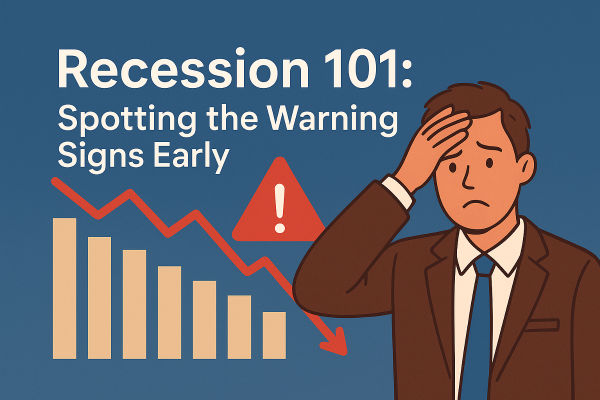The U.S. Department of Labor (DOL) and independent estimates paint a picture of a still-resilient labour market, but the recent government shutdown has interrupted the federal data flow and left several weekly releases unposted.
For the week ended October 18. independent tallies and state reports put seasonally adjusted initial unemployment claims at roughly 232.000. while continuing (insured) claims were about 1.957 million.
At the same time, the DOL's earlier published tables contain small revisions for September weeks, underscoring how frequently the weekly series is updated and how important it is to treat individual weekly moves cautiously. [1]
Independent Estimates for Initial and Continuing Unemployment Claims

While the official DOL release schedule was interrupted, independent tallies and state reports provide key datapoints for the most recently estimated period.
| Claim Type |
Week Ended |
Seasonally Adjusted Figure (Estimate) |
| Initial Unemployment Claims |
Oct. 18, 2025 |
approx 232,000 |
| Continuing Unemployment Claims |
Oct. 18, 2025 |
approx 1,957,000 |
These independent figures suggest the labor market remains relatively tight. The modest rise in continuing unemployment claims is a small but notable metric compared with the last fully published official week.
Official Labor Data and the Importance of Revisions
The latest fully published DOL release and the nature of the weekly reporting underscore why single-week moves must be treated with caution.
Last Official Release:
For the week ended September 20. 2025. the DOL officially published initial unemployment claims at $218.000$ (released on Sept. 25. 2025).[2]
The Role of Revisions:
DOL weekly figures are inherently provisional. Revisions occur frequently—often the week after publication—as states submit more comprehensive data and seasonal adjustments are updated.
These adjustments, usually by a few thousand, necessitate the use of the four-week moving average by analysts to smooth out volatility and identify reliable trend signals.
Government Shutdown and Department of Labor Data Gaps

The primary challenge to current economic assessment is the sustained interruption of the official weekly series.
Cause of Interruption:
An extended federal government shutdown halted the routine operations of the Bureau of Labor Statistics and other agencies.
Missing Data Series:
This has created substantial data gaps in the official weekly Unemployment Insurance claims reports, primarily covering the weeks from late September through early November.
The official national series remains patchy until the DOL fully processes the backlogged data.
Market and Policymaker Response to Missing Federal Data
The absence of continuous, official federal statistics has shifted the focus of financial markets and central bank officials.
Market Adjustments:
Markets are increasingly relying on private trackers, aggregated estimates from major financial institutions, and state labor office releases.
For the Oct. 18 week, private estimates for initial unemployment claims generally clustered in the low-to-mid $200.000$s.
Policy Assessment Complications:
The Federal Reserve and economists have warned that these data gaps complicate near-term policy assessments.
Fed officials are actively monitoring state reports and private indicators until federal statistics are fully restored.
The lack of a continuous, standardized federal series increases uncertainty about short-term labor market momentum.[3]
The Interpretation: Revisions, Gaps, and Policy Implications
| Interpretation Factor |
Implication for Analysis |
| Single-Week Volatility |
Initial unemployment claims are volatile; the four-week moving average is the preferred method for assessing labor market trends.[4] |
| Missing Weeks and Confidence |
Reliance on state submissions and third-party reconstructions is necessary but is not an equivalent substitute for the DOL's standardized, seasonally adjusted national bulletin, which reduces confidence in the near-term picture. |
| Near-Term Policy View |
While the broad view of a relatively tight labor market is unlikely to change instantly, a sustained uptick in claims (based on private or state data) could shift the Fed's near-term risk assessment and policy outlook. |
Frequently Asked Questions (FAQ)
Q: Why are weekly U.S. jobless claim reports missing?
A: The regular DOL UI claim reports have been suspended due to a federal government shutdown, which disrupted data collection, processing, and publication.
Q: How reliable are the private-sector estimates of jobless claims?
A: They use unadjusted state data plus established seasonal-adjustment factors previously published by BLS, so while not official, they are considered credible proxies.
Q: What does a rise in continuing claims indicate?
A: An increase in continuing claims suggests more people remain unemployed after their first week, pointing to slower rehiring or longer job search durations.
Q: Can the government shutdown's employment effects distort long-term labour-market trends?
A: Yes. Missing data weeks and higher federal worker claims could distort short-term trends, making long-term interpretation more challenging.
Q: What could the Fed do if the estimates show worsening claims?
A: If reconstructed data show a sustained rise, the Fed could reassess its near-term rate guidance or accelerate cuts, given higher unemployment risk.
Conclusion
The latest U.S. jobless-claim estimates signal a labour market that is gradually cooling but still fundamentally resilient. Initial and continuing claims have risen slightly, suggesting that some workers are taking longer to secure new employment. However, the larger challenge is the data blackout caused by the federal government shutdown, which has interrupted the normal flow of official statistics.
Without full DOL releases for multiple weeks, policymakers, markets, and analysts are relying on state-level submissions, historical seasonal models, and private-sector reconstructions. These sources provide credible guidance, yet they cannot fully replace the consistency and national standardisation of official federal data.
As soon as the government restores its statistical operations, a clearer and more reliable picture of labour-market dynamics will emerge. Until then, the U.S. unemployment claims trend should be interpreted cautiously, with emphasis on multi-week averages and corroborating indicators rather than isolated weekly estimates.
Sources:
[1]https://www.reuters.com/sustainability/sustainable-finance-reporting/us-weekly-jobless-claims-increase-more-people-collecting-unemployment-checks-2025-10-23/
[2]https://www.dol.gov/ui/data.pdf
[3]https://www.federalreserve.gov/newsevents/speech/waller20251117a.htm
[4]https://fred.stlouisfed.org/release/tables?eid=258888&rid=180
Disclaimer: This material is for general information purposes only and is not intended as (and should not be considered to be) financial, investment or other advice on which reliance should be placed. No opinion given in the material constitutes a recommendation by EBC or the author that any particular investment, security, transaction or investment strategy is suitable for any specific person.























